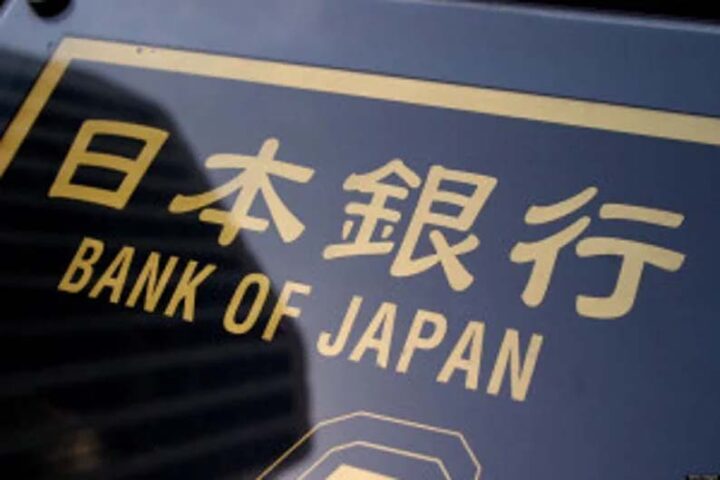By Jeffrey Halley
The “R” word is being used more and more as recessionary winds start blowing loudly through economic data and the price actions across the asset class spectrum.
On Friday, US manufacturing and industrial production data were soft, following weaker US retail spending and housing market data. Even oil prices cracked under the weight of recession noise. A classic case, perhaps, of high prices being the best cure for high prices?
US yields eased lower in response as well, but not much.
The US Dollar remained firm, while US equities had a mixed session. The Dow Jones edged lower, while the S&P 500 edged higher, but the Nasdaq jumped 1.40%.
One could argue that a recession in the US means less tightening, a boon for the interest-rate-sensitive Nasdaq. But as mentioned last week, there were a galactic amount of options expiries on US equity markets on Friday, so take the price action with a grain of salt.
A US holiday on Monday will keep volumes thin.
In China, iron ore, steel rebar and coal futures have all plummeted Monday as local markets join the US in pricing in a slowdown. Chest thumping over the weekend by China around the Taiwan Strait, and legislation allowing Russian-style “special operations” won’t be giving regional Asia much comfort either.
You can choose from an extensive drop-down menu of recessionary drivers. Rising inflation and interest rates in the developed world, the Ukraine-Russia war and ensuing commodity disruption, the covid-19 slowdown in China, and the list goes on. It is clear that sentiment is turning though and given the appalling track record of forecasting these past couple of years, the more central banks say, “soft landing,” the more nervous markets become, and rightly so.
Unfortunately, with all your monetary bullets fired and stagflation at your doorstep, as a central bank you don’t have any pleasant choices.
Do nothing, and inflation continues to rise, but growth may not; expect protests on the streets. Hike rates to dampen inflation, but with growth already slowing or falling, you know how the story ends.
The best I see it is that the recession, when it arrives, is short and sharp and, at least in much of the developed world, it’s starting from a relatively high base.
Nowhere has been more frantic than the crypto space which endured some emotional volatility over the weekend as expected.
Bitcoin fell 15-odd percent on Saturday as support at $20,000.00 cracked, finishing 7.50% lower for the day at $18,955.00. It rallied on Sunday by 8.40% to $20,550.00, only to fall 3.50% Monday morning after another Solend Labs, which allows you to lend or borrow in something called Solana, granted itself emergency powers to take over a (very) large account to manage its exposure.
The more the merde hits the fan in the DeFi space, the less decentralised it seems to be becoming as reality bites. I can’t help but think of George Orwell’s Animal Farm. “All animals are created equal, but some are more equal than others.”
I don’t rule out a rally by cryptos this week as enough lambs appear to have been silenced for now. Equity markets in the real world may also have had the herd thinned enough temporarily.
The week is somewhat thin on tier one data. China has left its One and Five-year Loan Prime Rates unchanged Monday and may have added fire to the local market commodity price falls.
Markets appear disappointed that no stimulus crumbs were thrown to the markets, even a 5 or 10 basis point trim of the 5-year LPR.
China’s biggest short-term threat is more covid-19 lockdowns. It is unlikely to be “one and done,” and the virus only has to get lucky once under covid-zero.
Elsewhere in the Asia-Pacific, Reserve Bank of Australia Minutes is released Tuesday, with markets picking over the carcass searching for any clues on the direction of RBA interest rate policy.
How high, and for how long, will rates move higher? Friday’s Japan Inflation Rate will have more interest than any time over the last 20 years, as the Bank of Japan defied the word and maintained super-easy monetary policy last Friday.
The US calendar sees New Home Sales on Tuesday and Existing Home Sales on Friday. Both have downside risks and may add to the recessionary noise.
The week’s highlight is likely to be testimony from Fed Chairman Jerome Powell on Wednesday and Thursday. But we also have a plethora of Fed speakers throughout the week as well.
With a dearth of tier-1 data, Fed speakers are likely to drive intraday volatility, although it wouldn’t be a surprise that after last week’s bonfire, risk assets in general consolidated higher this week. Either way, we can expect plenty of intraday noise, but ultimately directionless volatility this week.
Oil slumps on recession fears
Oil prices plummeted on Friday as increasing recession fears after soft US Manufacturing and Industrial Production data saw a mass sell-off in futures markets. Brent crude fell by 5.0% to $113.15 a barrel, but WTI plummeted by 6.0% to $110.00. In Asia Brent has edged 0.25% lower to $112.85, while WTI has fallen by 0.75% to $109.20.
Chinese Customs reported record oil imports for May Monday morning, suggesting demand remains as strong as ever. That remains so around the world, and the squeeze on refined products like diesel and gasoline remain as tight as ever.
Friday’s falls have bought my six-month support lines back into focus. On Brent crude, that is at $107.00 a barrel, just below its 100-day moving average (DMA) at $107.95. Ahead of this, it has support at $112.00, with resistance at $114.25 and $116.00. WTIs six-month support line is at $106.00, just ahead of its 100-DMA at 105.00. It has interim support at $108.25, and resistance at $112.50.
If the US cuts federal fuel taxes, that could be enough to tip the scales lower. It is hard to see either contract moving lower than $100.00 a barrel given the state of the physical market.
Gold range continues
It was another wax on, wax off, day for gold on Friday as it retraced Thursday’s gains and fell by 0.88% to $1840.00 an ounce on US Dollar strength. In Asia, it has gained slightly by 0.25% to $1845.00 an ounce.
Despite the noise of the past week, it remains anchored in the middle of its one-month range. The overnight price action shows that the inverse correlation to the US Dollar is as strong as ever.
Gold has resistance at $1860.00 and $1880.00, the latter appearing an insurmountable obstacle for now. Support is at $1805.00 and then $1780.00. Failure of the latter sets in motion a much deeper correction, while I would need to see a couple of daily closes above $1900.00 to get excited about the upside.
Jeffrey Halley is Senior Market Analyst, Asia Pacific at OANDA
Opinions are the author’s, not necessarily that of OANDA Global Corporation or any of its affiliates, subsidiaries, officers or directors. Leveraged trading is high risk and not suitable for all. Losses can exceed investments.







